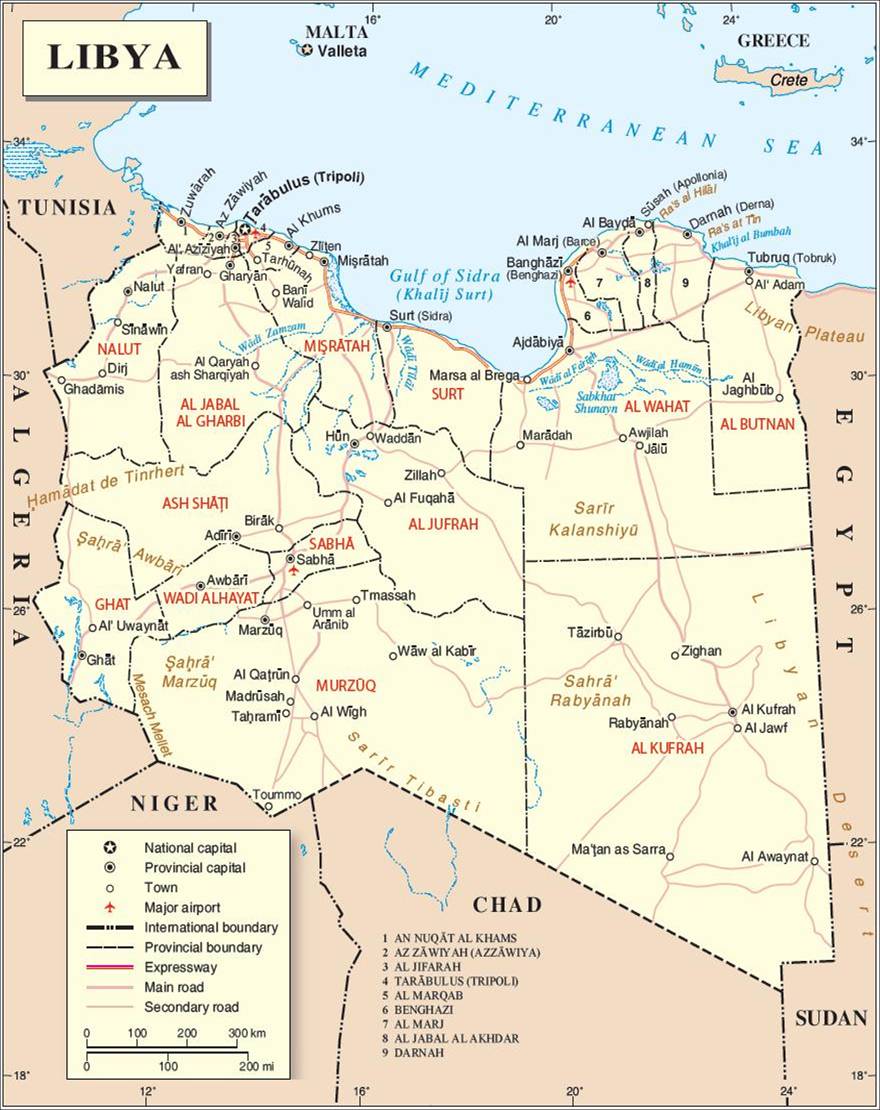Tripolitania and Tripoli
The head of the Misratah Local Council, Salim Bayt Al Mal, confirmed to the Libyan daily Al Manara on 8 November that an armed group had opened fire on a convoy belonging to the Chief of Staff of the Armed Forces. Al Mal reported that the attack occurred recently along the coastal road, although no location was given and that arrests have been made. Separately, Al Manara reported that the Ministry of Interior arrested a terrorist cell in the Al Quwayiyah area on 8 November. The cell is accused of plotting to carry out ‘subversive acts’ in Tripoli and of being in direct contact with remnants of the Qadhafi regime in Bani Walid. No further details were reported.
General Hussein Abdullah, chief of the temporary military council in Bani Walid, told the Libya Herald on 8 November that security was stable in the town and the roads are largely open. Abdullah also stated that 80% of electricity and water supplies were back on, schools are expected to re-open soon and that the hospital has been replenished with drugs and equipment. After the siege of Bani Walid ended on 24 October, the government created committees for defence, public services and the return of refugees, which report to Abdullah. While these reports are likely portraying the ‘positives’ following the fall of the town to government forces, the measures in place do indicates better coordination among government agencies and greater foresight by government officials.
On 11 November, the Ministry of Interior conducted a restricted visit for journalists into Bani Walid to highlight what they termed the town’s ties with the Qadhafi regime. During the visit journalists were showed buildings used by pro-Qadhafi fighters, such as a school and radio station, as well as documents allegedly tying them to the former regime. On a separate note, Libyan authorities have been criticised for failing to release the names of more than 100 pro-Qadhafi loyalists reportedly arrested during the military operations in Bani Walid.
Clashes were reported to have broken out over 10/11 November between Kabaw militia and fighters in Tiji in the NafusaMountainregion. The Libya Herald reported that at least one person was killed and several wounded dead and several wounded, while the daily Akhbar Libya Al Jadida reported four dead and two wounded. Fighting reportedly broke out after a Kabaw-based militia attempted to take weapons and ammunition from a base in Tiji. According to the Libya Herald, Tiji was used by the Qadhafi regime as a base of operations for shelling rebels in the Nafusa Mountains during the war. Tiji is home to many members of the Sayaan tribe, which supported the regime during the war. The daily Libya Al Mustakbal reported the return of calm to Tiji on 12 November and that the National Army and the Shield of Libya had taken control of the area and have forces positioned between the two towns.





